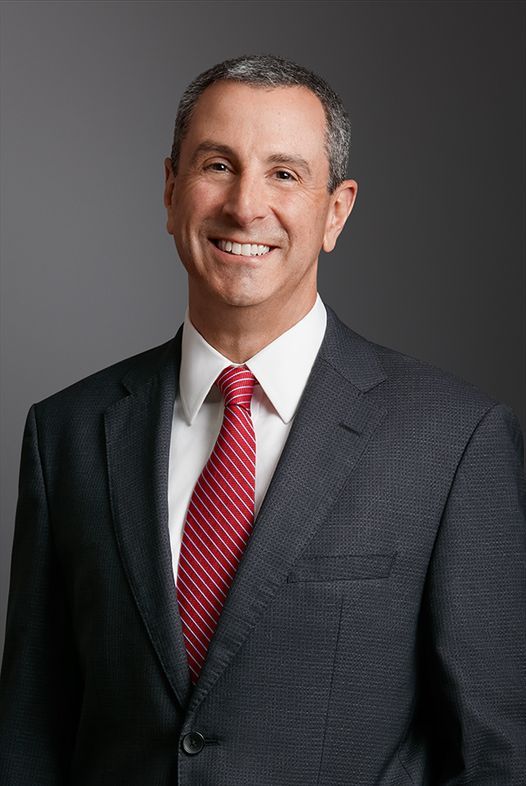Axinn IP Update: The Supreme Court Hears Arguments About the Enablement Standard in Amgen v. Sanofi
March 28, 2023
By: Ted Mathias, Thomas Hedemann and Patrick Doyle
The Supreme Court heard arguments yesterday in Amgen v. Sanofi, the closely-watched case involving the enablement standard for patent claims, particularly as applied to functionally-defined genus claims. The question raised by Amgen’s petition is whether the Federal Circuit’s long-standing articulation of the enablement requirement – that the specification must enable those skilled in the art “to reach the full scope of claimed embodiments” without undue experimentation – exceeds the statutory requirement that the specification teach the skilled person to “make and use” the invention. Although it is always dangerous to make predictions based on the oral argument, the Court’s questions appeared to show skepticism that the Federal Circuit’s test conflicts with the patent statute.
Amgen’s U.S. Patent Nos. 8,829,165 and 8,859,741 are directed to monoclonal antibodies that reduce low-density lipoprotein (“LDL”) or “bad” cholesterol. They functionally claim antibodies that bind to the PCSK9 protein and block it from binding to LDL receptors. In 2015, Amgen filed suit alleging that Praluent®, a cholesterol drug marketed by Sanofi, infringes the patents. Infringement was stipulated, but the district court granted Sanofi’s post-trial motion that the patents were invalid for lack of enablement. The Federal Circuit affirmed, noting that under its existing case law, broad functional claim limitations “pose high hurdles in fulfilling the enablement requirement.” It further agreed with the district court that a person of ordinary skill would require “undue experimentation” to practice the invention under the “Wands factors” because, among other things, the scope of the claims cover “millions of antibody candidates” and the “invention is in an unpredictable field of science.” The court concluded that “substantial time and effort would be required to reach the full scope of claimed embodiments.” Amgen’s subsequent Supreme Court petition garnered numerous amici submissions on both sides, as well as the Solicitor General’s invited brief.
The entire Court had questions during yesterday’s argument, with Thomas, Sotomayor, Gorsuch, and Jackson among the most active Justices. A number of the questions focused on whether the dispute really concerns the Federal Circuit’s enablement test or merely its application of that test in this case. In response to direct questions, both sides affirmed their general agreement with the “undue experimentation” standard and the Wands factors, although Amgen argued that the latter has become too much of an abstracted “checklist.” Amgen urged the Court to reject what it termed the Federal Circuit’s “cumulative-effort standard,” however, arguing that the cumulative time and effort it would take a skilled artisan to find and make every single species in a genus should have little or no relevance. Instead, Amgen argued, the question should be whether the patent provides enough information to permit the skilled person to find and make useful species without excessive effort or experimentation. Amgen further argued that to demonstrate non-enablement, a patent challenger must show: 1) one species (here, an antibody) that cannot be found without undue experimentation and 2) that this species isn’t just an outlier but is part of a “meaningful” category of species. Sanofi responded that although the Federal Circuit didn’t use the word “cumulative” in its opinion, the combined effort to find and make every species should be considered under the Wands factors.
On the factual issues, Justice Thomas repeatedly asked Amgen whether it had invented only the 26 specific antibodies described in the patent specification or all the “millions” of additional antibodies encompassed by the claims. Amgen confirmed that its claims cover potentially “millions” but argued that there are really only about 400 antibodies and that the rest are merely very small variations of those that skilled artisans would not consider to be distinct. Justice Sotomayor asked both sides to explain how a skilled artisan would find species other than the 26 recited in the patent specifications, and to what extent those steps are time consuming or can be done by high-throughput technology. Justice Jackson pressed Sanofi on whether they could prove Amgen’s patents were not enabled, even if the patent specifications disclosed a roadmap showing a skilled artisan how to make and use every disclosed embodiment, and there was no evidence of failed attempts to follow the roadmap.
The Solicitor General sided with Sanofi, arguing that (1) the doctrine of equivalents provides sufficient protection against copyists to incentivize innovation, and (2) permitting genus claims like those at issue would hinder innovation by preventing others from developing species that might work better than those disclosed by the patentee.
We expect a decision by the end of June.
To subscribe to our publications, click here.
Featured Insights
Featured Insights
ACI 12th Annual Summit for Women Leaders in Life Sciences Law
Speaking Engagement
Intellectual Property
National LGBTQ+ Bar Association Lavender Law Conference and Career Fair 2025
Sponsorship
National Bar Association 100th Annual Convention and Exhibits
Sponsorship
Antitrust
Keeping Pace: Updates in Cartel Enforcement
Webinar
Antitrust
New Incentives, New Rewards: What You Need to Know About the Antitrust Division’s First-Ever Whistleblower Rewards Program
Axinn Viewpoints
Antitrust
Informa Antitrust Midwest
Speaking Engagement
GCR Live: Law Leaders Europe 2025
Speaking Engagement
Antitrust
How I Made Partner: 'Show Up and Build Rapport With Colleagues and Clients,' Says Michael O'Mara of Axinn Veltrop & Harkrider
Media Mentions
Antitrust
Axinn Counsel Rebecca Clegg Named 2025 MCCA Rising Star
Awards & Recognitions
Intellectual Property
Chambers Merger Control 2025 Guide
Byline Articles
Antitrust


